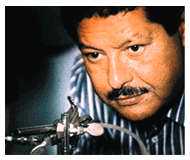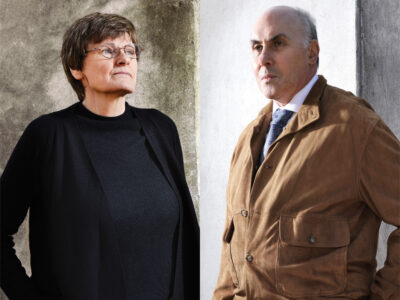
Ahmed Zewail Gr’74 Hon’97, a scientist at the California Institute of Technology, accepted the Nobel Prize for chemistry last month for his pioneering research in femtochemistry—a field that has emerged from the use of ultrafast lasers to observe chemical reactions as they actually happen.
The 53-year-old chemist’s laser-spectroscopy technique has led to a greater understanding of the nature of chemical bonds as well as the details of such complex processes as photosynthesis, animal vision and polymer formation. It has also opened up a whole realm of practical possibilities, from pain-free dentistry to quicker computer chips.
In the 1980s, the Egyptian-born Zewail and his colleagues developed a way of taking split-second snapshots of the once-invisible intermediate stages in a chemical reaction by firing two pulses of laser light in quick succession. The first pulse of light excites the molecules and the second, weaker pulse shows how the molecules have changed since the first one fired. The reactions are measured in time units called femtoseconds. (A femtosecond is one quadrillionth, or .000000000000001, of a second. Put another way, a femtosecond is to a second what a second is to 32 million years.)
In the words of the Royal Swedish Academy of Sciences, which awarded the Nobel, Zewail’s contributions “have brought about a revolution in chemistry and the adjacent sciences.” His laser technique is now used by chemists worldwide.
During a news conference at Caltech on Oct. 13, Zewail joked that he was “frozen in time” when he received the prize notification. In the busy weeks leading up to his departure for the award ceremony in Stockholm, Zewail was unable to grant an interview. He did respond briefly to some questions by e-mail. “Penn was my first science home in the U.S. and I owe a great deal to the teachings in the department and to my research mentor, [chemistry] Professor Robin Hochstrasser,” he wrote.
Hochstrasser, in turn, remembers Zewail as “a very good student who was overflowing with enthusiasm for science. I recall when he first came into my office, having just arrived from Egypt, he had to use his wife as an interpreter in our discussions. However he learned English and quantum mechanics very quickly, did some first-rate experiments here and wrote an outstanding Ph.D. thesis. He was among my most promising students at the time.”
Zewail grew up in Egypt and earned his bachelor’s and master’s degrees from Alexandria University. “Ever since I [was] a child I had interest in mathematics and other sciences,” he wrote. Two years after earning his doctorate at Penn, he joined the faculty at Caltech, where he is now the Linus Pauling Professor of Chemical Physics. Zewail has dual citizenship in the United States and in Egypt.
In 1997 Zewail returned to Penn’s campus to receive an honorary degree for his scientific contributions. The following year, Egypt honored him with the release of two postage stamps bearing his likeness [“Alumni Profiles,” July/August 1999]. Among his numerous other accolades have been the Welch Prize and the Chemical Sciences Award from the National Academy of Sciences.
The keen window of observation made possible by femtochemistry often leads Zewail to refer to molecules in anthropomorphic terms—meeting, mating and breaking up. Describing, for instance, the reaction between sodium and chlorine that forms common salt, he has said, “They love and hate each other about 10 times before they break the bonds and divorce.”
“Perhaps,” Zewail wrote in explanation of his choice of metaphors, “there is a unifying picture in the microscopic and macroscopic worlds.”
Although the potential uses of femtochemistry are abundant —in dentistry, for example, femtosecond lasers have been introduced with the capability of drilling holes so fast that they don’t cause pain—for Zewail, the beauty still lies in watching a once-invisible world. “My real excitement is about fundamental science and we still have plenty of ideas for the future—remember, I am still young!”




